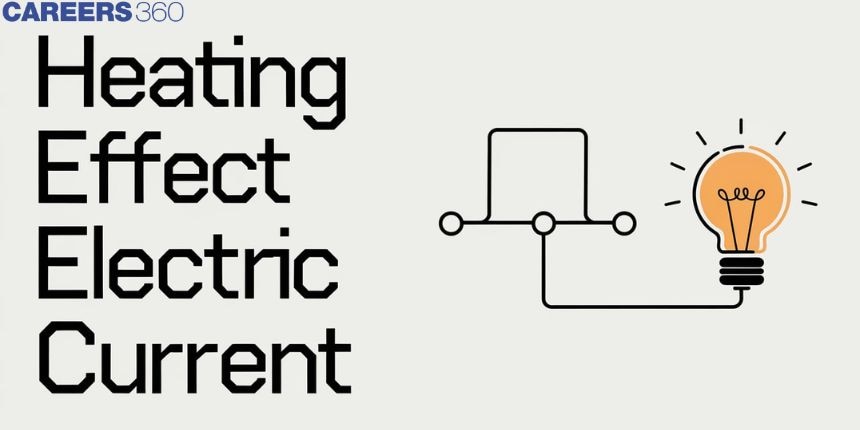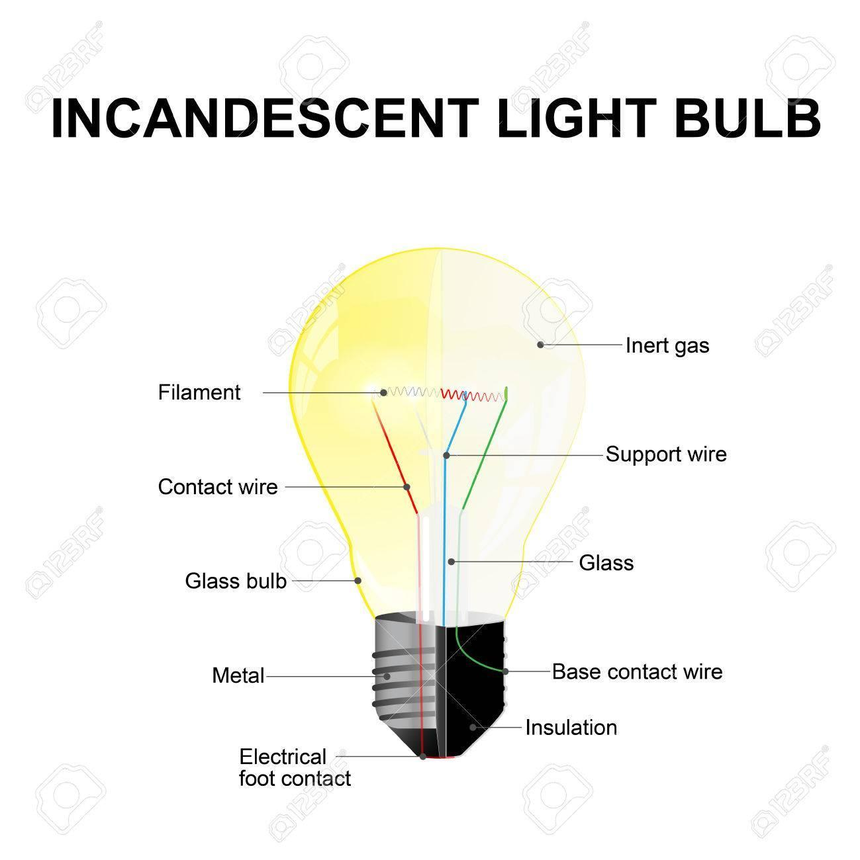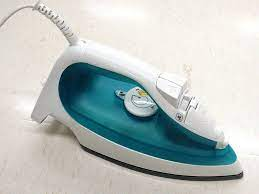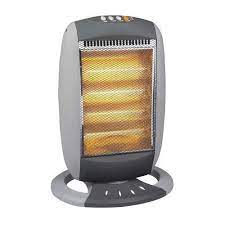Heating Effect Electric Current - Detailed Guide
When an electric current passes through a conductor, heat is produced as a result of the conductivity of the material. Such an occurrence is referred to as the heating effect of electric current. This concept is harnessed in everyday activities ranging from the burning wire of a bulb to heaters and toasters. This effect is also seen in electronic gadgets such as mobile phones and laptops which produce heat after use for some time. Knowing this effect is not only important in making electric devices effective but also in making them safe in circuits.
This Story also Contains
- What is the Heating Effect of Current?
- Heating Effect of Current Formula
- What Causes the Heating Effect of Electric Current?
- Application of Heating Effect of Electric Current
- Disadvantages of Heating Effect of Electric Current

Also, read
What is the Heating Effect of Current?
The heating effect of current is described as the generation of heat while an electric current is conducted through a wire. This is because while electrons are in motion, the conductor offers resistance to their motion. When electrons travel in a conductor, they contact the atoms of the conductor and impart energy to the atoms as heat.
Heating Effect of Current Formula
When an electric current flows through a conductor, heat is produced due to the resistance offered by the material. This phenomenon is explained by Joule's Law of Heating.
According to Joule's law, the heat produced in a conductor depends on:
1. The square of the current flowing through it
2. The resistance of the conductor
3. The time for which current flows
The heat produced is given by:
$
H=I^2 R t
$
Where:
- H→ Heat produced (joule)
- $\mathrm{I} \rightarrow$ Current (ampere)
- R → Resistance (ohm)
- $\mathbf{t} \rightarrow$ Time (seconds)
Using Ohm's Law:
$
V=I R
$
We can write Joule's heating formula in other useful forms:
1. In terms of $V$ and $I$ :
$
H=V I t
$
2. In terms of V and R :
$
H=\frac{V^2}{R} t
$
What Causes the Heating Effect of Electric Current?
The heating effect of electric current occurs due to the conversion of electrical energy into heat energy.
- A battery or cell is the source of electrical energy in a circuit.
- Inside the battery, chemical reactions create a potential difference (voltage).
- This potential difference pushes electrons through the circuit, causing an electric current.
- The circuit contains resistors or other components that oppose the flow of electrons. This opposition is known as electrical resistance.
- To move electrons through a resistor, work has to be done against this resistance.
- The electrical energy supplied by the battery is partly used to overcome this resistance.
- As a result, this energy is dissipated (converted) into heat energy in the resistor or conductor.
Application of Heating Effect of Electric Current
Electric bulb: An Electric bulb or current bulb is based on the principle of the heating effect of electricity. When an electric current passes through a very thin, high-resistance tungsten filament of an electric bulb, the filament becomes white-hot and emits light.

The same current flowing through the filament produces enormous heat but almost negligible heat is produced in the connecting wires of copper. This is because of the fact that the fine tungsten filament has very high resistance but the copper wire has very low resistance in comparison to tungsten.
Electric Iron: Mica is inserted between the metal component and the electrical coil in iron because it is an insulator by nature. The constant passage of current warms or heats the iron coil, which is subsequently passed on or transferred to the metallic portion via the mica employed.

The electric iron is based on the heating effect of electricity. When we plug in, current starts to flow and the heating element gets heated and heat produces so iron becomes hot and we press it to the clothes to remove wrinkles. But due to the continuous supply of current iron, heated up to a dangerous level to prevent this, iron has a thermostat.
Electric Heater: An extremely high resistance nichrome wire is typically used as a coil in an electrical heater. The coil is turned or twisted on grooves made of a ceramic material such as an iron plate or Chinese clay plate. When an electrical current flows through the coil, it soon becomes warm or heated, and this heat is subsequently frequently used to heat our cooking pots.

The electric heater is based on high electrical resistance heating. This method of heating has 100% efficiency in converting electrical energy into heat energy. When we pass the electric current through the electric heater then due to the high resistance heating element which is made up of nichrome the heating elements start to glow and produce heat.
Disadvantages of Heating Effect of Electric Current
When an electric current flows through a conductor, heat is produced due to the conductor's resistance to the running current. The following are some disadvantages:
-
Heat energy has been converted from a fraction of the electric currents flowing through the conductor. This appears to be a loss of energy.
-
An additional cooling system must always be added to the circuit to mitigate the heating effect. This raises the cost.
- The heat produced can cause damage to the insulating as well as other electrical components, and also catch fire.
Frequently Asked Questions (FAQs)
Electric iron , electric kettle, oven, electric heater etc.
The SI unit of heat is joule.
The formula of heat in electricity is H = I².R.t
Nichrome wire is used in electric heaters
Tungsten is used to make the filament of an electric bulb.